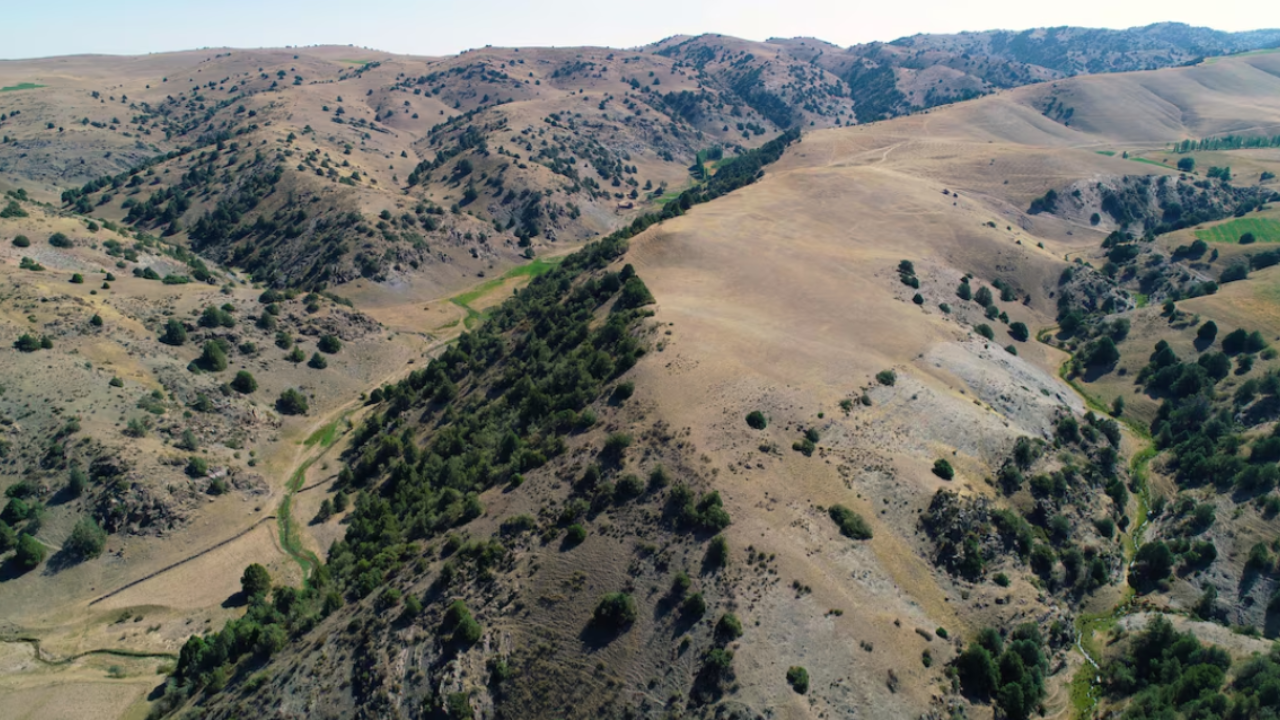
©Michael Frachetti/Handout via REUTERS
Vocabulary:
I will read the words, meanings, and sample sentences. Then, repeat after me.
- burial /BER-ee-uh/
- fortification /fawr-tuh-fi-KEY-shuhn/
- rugged /RUHG-id/
- kiln /kiln/
- furnace /FUR-nis/
[noun] – the act of placing a dead body into the ground
Many cultures have unique rituals and customs surrounding burials.
[noun] – strong walls, towers, etc. that are built to protect a place
The castle was surrounded by strong fortifications to prevent any invasion.
[adjective] – having a rough, uneven surface or being tough and strong
The hikers struggled to cross the rugged terrain of the mountains.
[noun] – a large oven used for firing or baking materials like pottery or bricks
The pottery was carefully placed in the kiln for the final firing process.
[noun] – an enclosed structure where heat is produced, often for metalworking or heating buildings
The factory used a furnace to melt iron and produce steel.
Article reading:
Please read the whole article. Then, I will check your pronunciation and intonation.
In the mountains of Uzbekistan, archaeologists have discovered two long-lost cities that were significant hubs on the ancient Silk Road, dating from the 6th to 11th centuries AD. These cities, Tugunbulak and Tashbulak, were situated in highland areas, roughly three miles apart, at an elevation of 6,560–7,220 feet above sea level. Tugunbulak, the larger of the two, covered approximately 300 acres and likely housed tens of thousands of inhabitants, making it one of the largest cities in Central Asia during its time. This site is believed to have been a key center for the metal industry, with preliminary findings suggesting the production of steel. Tashbulak, significantly smaller with an estimated population in the thousands, had a unique feature—a large cemetery with early Islamic burials, reflecting the spread of Islam in the region.
Researchers employed lidar technology, a laser-based method of remote sensing, to map the cities and uncover their structures, roads, and fortifications. This advancement in technology enabled a more detailed understanding of the cities’ layouts, which would have been difficult to explore otherwise due to the region’s rugged terrain. Excavations at Tugunbulak revealed kilns and furnaces, hinting at its role in the steel industry, while Tashbulak’s cemetery suggests religious or cultural significance. These findings challenge earlier views on the political and industrial landscape of the Silk Road, revealing that major centers of power and production extended beyond well-known cities like Samarkand.
Researchers employed lidar technology, a laser-based method of remote sensing, to map the cities and uncover their structures, roads, and fortifications. This advancement in technology enabled a more detailed understanding of the cities’ layouts, which would have been difficult to explore otherwise due to the region’s rugged terrain. Excavations at Tugunbulak revealed kilns and furnaces, hinting at its role in the steel industry, while Tashbulak’s cemetery suggests religious or cultural significance. These findings challenge earlier views on the political and industrial landscape of the Silk Road, revealing that major centers of power and production extended beyond well-known cities like Samarkand.
Discussion Questions:
I will read each question. Then, please answer them.
- Have you ever visited a historical site or ancient city? If so, what was the most interesting thing you learned about it? If not, would you like to visit an ancient city like Tugunbulak or Tashbulak? Why or why not?
- Have you ever heard about the Silk Road before reading this article? If so, what do you know about its importance in history? If not, what aspect of the Silk Road interests you the most after reading this?
- Do you believe that modern society can learn important lessons from the way ancient civilizations like Tugunbulak managed their industries and trade?
- What challenges do you think archaeologists face when trying to uncover ancient cities like Tugunbulak and Tashbulak in remote or rugged locations?
- How important do you think it is to preserve archaeological sites like Tugunbulak and Tashbulak, and what can be done to ensure these historical sites are protected for future generations?
Summarization
Please summarize the whole article using your own words and expressions. You will have one minute to prepare before you answer.
Describe:
Please explain the definition of each word listed below based on your understanding. You can provide example sentences if needed.
- uncover
- population
- well-known
- archaeologist
- above sea level